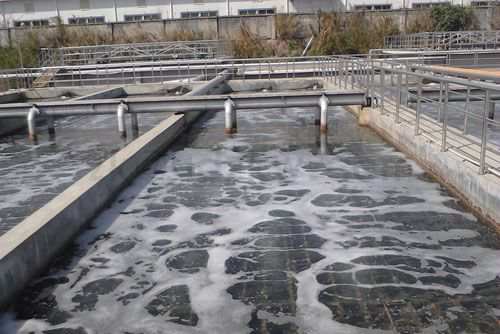

2022-03-11 14:16:37
The super gas dissolving ability of micro-nano bubbles can be used to design the aeration system of new MBR and the development of various high-concentration chemical wastewater treatment equipment.

Example 1, in a food processing factory, the daily drainage is 200-300t/day, the COD is 2500-2800mg/L, the SS is 300-400mg/L, and the oil (NH) in water is about 800mg/L. After the bubble aeration method, both BOD and COD decreased to below 10mg/L, and the effluent water quality was transparent, close to clear water. Compared with the original activated sludge method, the sludge yield is reduced and the odor is reduced. Although the electricity consumption of the ozone generator is increased, the ozone utilization rate of the micro-nano bubbles is increased (more than 80%), which is different from the reduced ozone generator. Compared with the treatment cost of sludge treatment volume, it still has considerable advantages.
Example 2, in the chemical wastewater treatment containing PVA for the production of fibers, it is also difficult to directly use biological treatment due to the chemical that PVA is difficult to decompose. Usually, the Fenton method of iron powder and peroxide water is used for treatment. The treatment cost is high, and the generated sludge contains a large amount of iron, which is not conducive to subsequent treatment. In the laboratory, PVA is added to distilled water and exposed to micro-nano bubbles. After 2 hours, the removal amount of TOC was measured to be more than 30%. The micro-nano bubble aeration experiment was carried out using the raw water of the factory (TOC is 1200mg). After 40 hours, the TOC can be reduced to 1/10 of the raw water, and, The treatment time can be shortened by increasing the concentration of ozone.
Advanced Oxidation Technology and Device of Ozone Micro-Nano Bubbles + Ultraviolet Light
The equipment adopts F.BT-50S in the series of micro-nano bubble generators. It uses the pressure of the pump to transport the waste water and raw water to the low-pressure tank, and uses the negative pressure self-priming effect of the generator to inhale ozone. The dissolution of ozone can increase the dissolved concentration of ozone in the treated water, and because the micro-nano bubbles of ozone in the generated ozone water have a slow-release effect, it can prolong the retention time of ozone in water, and improve the utilization rate of ozone by more than 80%. The ozone utilization rate of ordinary products of this type is only 30%-40%, which can reduce operating costs by more than 50%. In addition, the synergistic effect between ozone and ultraviolet light combined with its strong oxidizing property can significantly accelerate the degradation rate of organic matter and greatly reduce its COD and BOD content. When ozone is illuminated, free oxygen O? is first generated, and O? reacts with water to form ?OH. In addition to inducing the generation of ?OH, UV radiation can also generate other excimers and free radicals to accelerate the chain reaction, and these excimers and free radicals will not be produced in a single ozone oxidation process. In neutral or alkaline solutions, the O3/UV process produces less hydrogen peroxide and more free radical ?OH. The reaction rate can be increased by 3-5 times when there is UV light irradiation compared with that without UV light irradiation. At the same time, using the slow release effect of micro-nano bubbles in water, the method of using ozone micro-nano bubbles combined with ultraviolet light is an efficient advanced oxidation treatment method, which can quickly and cost-effectively oxidize and decompose the refractory substances contained in the wastewater of chemical plants into Nutrients that can be utilized by microorganisms help to improve the efficiency of subsequent biological treatment.
Features:
a) A large number of very active HO* radicals are generated, and its oxidizing power (2.80V) is second only to fluorine (2.87V). The electron affinity is 569.3KJ, which can pull out the H in the saturated hydrocarbon to form the self-oxidation of the organic matter, so that the organic matter can be degraded, which cannot be achieved by all kinds of oxidants alone;
b) The reaction speed is fast, and the oxidation rate constant of most organic compounds and hydroxyl radicals can reach 106-109M-1S-1;
c) HO* free radicals react directly with free radicals in wastewater to degrade them into carbon dioxide, water and inorganic salts without any choice, without secondary pollution;
d) Since it is a physical-chemical treatment process, the reaction conditions are mild, and there are usually no requirements for temperature and pressure, and it is easy to control to meet the treatment needs, and even degrade 10-9 pollutants;
e) At the same time, it can be used as a separate treatment and can be matched with other treatment processes, such as pre- and post-treatment of biochemical treatment, which can reduce the treatment cost;
Contact: Ozonnier Micronano Bubble Generator Manufactor
Phone: 086 15615887629 (whatsapp)
Tel: 086 15615887629 (whatsapp)
E-mail: zk@qdzkw.com
Add: Qingdao, China